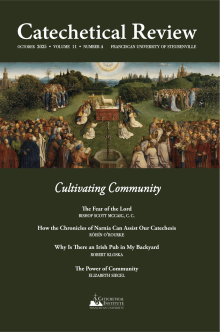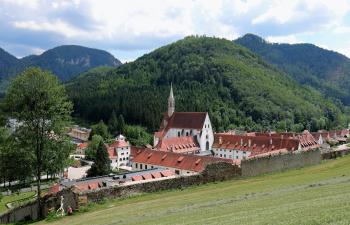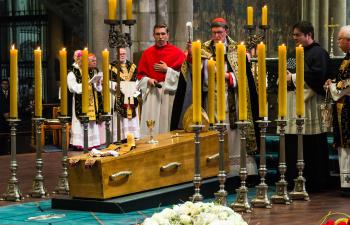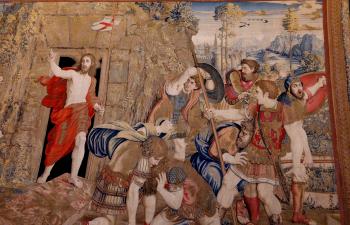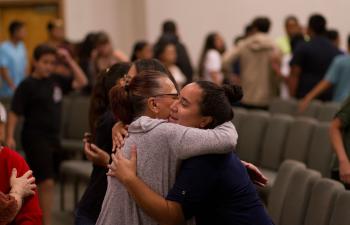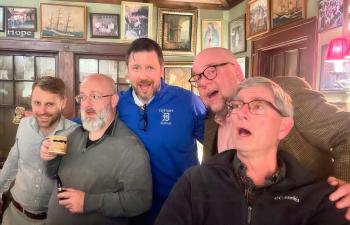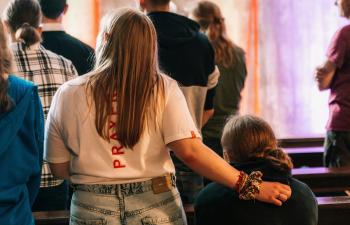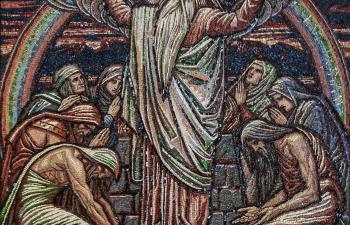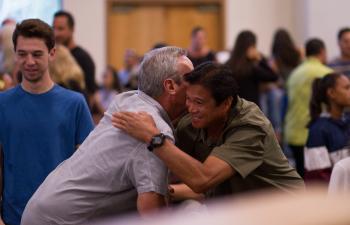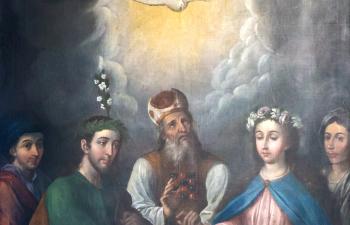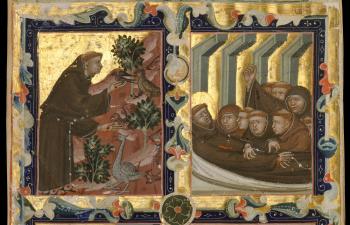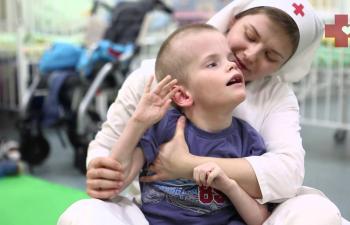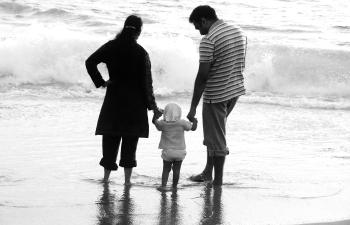 When people learn that I have a full-on, legitimate Irish pub in my backyard, their first reaction is usually bewilderment, followed quickly by a deep curiosity. Then, when they see some photos and I explain what happens inside, they often want one of their own. The idea of a private backyard pub lands especially strongly with men. Often, people need to come and visit to truly understand what it is and how it works. Once they come inside and start to see it, curiosity sets in. Inevitably, the conversation shifts to the question of why. “Why did you do all this? And is your wife okay with it?”
When people learn that I have a full-on, legitimate Irish pub in my backyard, their first reaction is usually bewilderment, followed quickly by a deep curiosity. Then, when they see some photos and I explain what happens inside, they often want one of their own. The idea of a private backyard pub lands especially strongly with men. Often, people need to come and visit to truly understand what it is and how it works. Once they come inside and start to see it, curiosity sets in. Inevitably, the conversation shifts to the question of why. “Why did you do all this? And is your wife okay with it?”
It is no secret that friendship seems to be on the decline in this first part of the 21st century. According to a 2021 survey from the Survey Center on American Life, only 38% of Americans report having five or more friends. In 1990, the year I graduated from college, that number was 63%. Men seem to be suffering the most. Only 21% of men reported receiving any emotional support from a friend within the past week. Today, one in seven men report having no close friends at all.[1] I cannot say that one day I decided to build the pub to directly address this epidemic of loneliness. Its evolution was far more natural and organic. But this epidemic has certainly weighed heavily on my heart for a long time.
Born from Suffering
Long before the pub became a thing, it started with a couple of chairs on the side of our house. This modest, entirely unremarkable place somehow developed into a spot where people would come to sit quietly and talk about the challenges and heartaches of their lives. Sometimes it was a place of laughter and fun, but more often it was a place for thoughtful reflection, encouragement, and deep interpersonal encounters. For many years, I would sit there alone at night and post reflections on social media based on things I was hearing and contemplating.
To understand the genesis of the pub, however, you have to understand the backstory. Our family history is inextricably tied to my ongoing 22-year journey of medical challenges. It began with a cancer diagnosis in 2003. That lymphoma was supposed to be relatively easy to eradicate, but for some reason, it just didn’t want to leave quietly. Ultimately, it took five protocols of chemotherapy, six weeks of daily radiation, and two brutal stem cell transplants requiring months of hospitalizations and quarantine. I underwent 19 bone marrow biopsies and five surgical biopsies. Since then, I’ve had 23 other surgeries indirectly related to cancer, and about two dozen additional hospitalizations. I still average one or two per year. Throw in a devastating accident that broke my kneecap in half (requiring two surgeries) and a host of side effects—including tinnitus, chronic fatigue syndrome, recurring viral attacks, chemo-induced cognitive impairment, and radiation-induced cardiotoxicity that led to a heart attack and the placement of three stents in my arteries in 2021, and you start to get a picture of what my wife Margy and our five children have endured with me.
All of this helped make the pub what it is today. For over two decades, in our darkest hours of suffering, our family, friends, and neighbors consistently rallied around us in amazing ways. We’ve been the beneficiaries of countless meals, rides, free childcare, and miscellaneous acts of love.
Shortly after my initial diagnosis, the house we had leased for seven years was being repurposed, and we needed to find a new place to live. Not making much money at the time and facing a daunting and potentially fatal illness, we were in a difficult position. Providentially, there was an affordable house for sale in an up-and-coming neighborhood, but it needed a lot of work. It had good bones and a warm and positive history, but was a true fixer upper. Think weeds, neglect, clutter, and deferred maintenance. To illustrate this, one of the conditions of the sale was for the seller to remove the Volkswagen Beetle embedded in the ground in the backyard before we closed the deal.
Amidst our cancer battle, taking on a project like this was a daunting task. But our community rallied. Led by a saintly Holy Cross brother, over 200 people worked for three and a half months to get our house ready while I was receiving chemotherapy and radiation. Margy was often at my side during treatments, so my sister Mary, along with neighbors and friends, including the Sisters of St. Francis of Perpetual Adoration, temporarily “adopted” our children and joyfully cared for them. When we took our car into the mechanic, instead of fixing it he went out and bought us a new one. Let that sink in: our mechanic bought us a car. Years later, when that one broke down, a family friend bought us a brand-new minivan. People sent us anonymous gifts of every imaginable kind. I would never be able to remember and list all of the various ways our community blessed us during those dark times.
When my cancer came back for a third time in 2007 and I was forced into six months of isolated quarantine, the community organized a fundraiser at our local high school that raised $85,000—the exact amount needed to cover our expenses. Four hundred and fifty people attended.
If we lived another 10,000 years, we could never repay these people. Our gratitude is profound and overwhelming. This is a kind of gratitude that demands a response. Our pub ministry grew directly from this wellspring of love.
Gatherings Large and Small
My family has lived for the past two decades in a 110-year-old house on a tree-lined street named St. Peter in an old neighborhood a few blocks from the University of Notre Dame. This spring, we hosted a college graduation party attended by about 85 people in our backyard. It featured elegant standing cocktail tables scattered across a large patio, two tents, a five-person Irish session music group, and a food table for snacks.
Inside the rather plain adjacent building toward the back of the property lies a surprise for first-time visitors. It is unmistakably an Irish pub—with couches, a fireplace, overflowing bookshelves, a bar, and a bell that rings to welcome each guest. The walls are a slightly chaotic visual spectacle featuring family photos, memorabilia, Notre Dame football, and lots of references to Jesus, his mother, and the saints. Behind the bar is a built-in piano that, on this night, was played by a talented young man leading the crowd in sing-along classics like “The Wild Rover,” “Hey Jude,” and “Crocodile Rock,” along with original songs that somehow everyone in the pub seems to know, though they’re only ever sung and heard in this singular place.
On this evening, the guests at St. Peter’s Pub—as the building is affectionately known—are familiar though dressed more formally than usual. The atmosphere is youthful, family oriented, and alive. Snacks, beer, wine, whiskey, and soft drinks are plentiful, yet moderation prevails.
What surprises people most is not that we hosted a graduation party; it’s who we hosted it for. This annual event brings together families and friends to celebrate the young men who live in the Opus Dei house across the street, a Catholic residence that offers spiritual formation and a focused community life. Other guests include other regular visitors to St. Peter’s Pub who are in town for graduation—family friends, friends of our children, and some of my college classmates who are now parents of graduating seniors in the tri-campus community of Notre Dame, Saint Mary’s College, and Holy Cross College.
Large group events like this are not unusual. We host “Football Fridays” before each of the six Notre Dame home games, information nights, nonprofit meet-and-greets, and even fundraisers. Still, the pub is most frequently used for smaller, quieter gatherings that occur throughout the year.
One such gathering is the St. Peter’s Pub Singing Club, where Notre Dame Glee Club alumni and current students gather to share beer, stories, and songs—some unchanged for over a century. At one recent gathering the oldest member was from the class of 1959, the youngest from the class of 2026. That’s a 67-year difference! The intergenerational nature of this monthly gathering makes for some interesting and healthy dynamics.
The pub also serves as a meeting space for “The Dudes,” a group of Catholic professors and staff in Notre Dame, Indiana, striving to live their faith through their work. They come for fellowship, mutual support, and meaningful conversations.
This Is How It Works (Most of the Time)
Aside from a weekly men’s rosary group at 6:45 a.m. every Thursday, St. Peter’s Pub has no set hours. We open when we open. That said, we average one or two small evening gatherings each week.
Typically, a visitor comes over, often bringing one or two others. Based on who’s coming, I may invite a few “regulars” to round out the vibe and facilitate conversation. There are several of these regulars, and they enjoy their role. Among them is a Catholic priest who likes to smoke a pipe; another is a professor who looks forward to the quality bourbon. These regulars enjoy meeting new people and telling stories. Their presence takes pressure off me as I tend the bar. They are friendly, curious, and excellent conversationalists. When they are able to join us, their presence is very helpful in setting the tone.
 Living in a university town means there’s a lot of musical talent around. We built a piano into the back of the bar so that a resident pianist—currently a gifted young man who writes musicals, designs classical churches, and leads sing-alongs while getting beer spilled on him—can do his thing.
Living in a university town means there’s a lot of musical talent around. We built a piano into the back of the bar so that a resident pianist—currently a gifted young man who writes musicals, designs classical churches, and leads sing-alongs while getting beer spilled on him—can do his thing.
Everything at St. Peter’s Pub is free. I tell patrons that if they don’t like free drinks, they can find another pub. That said, we have a tip jar for the pianist, and people often bring food or drinks. My wife jokes that our stock of beer and whiskey tends to grow rather than shrink after many gatherings.
Locally, the pub has become quite popular. People frequently ask for an invitation. We now have Instagram, Facebook, and LinkedIn pages to share photos and stories. To our surprise (and initially to our chagrin), St. Peter’s Pub even shows up on Apple Maps.
Local TV stations ask to use it as a location to film interviews. Quietly and without fanfare, we’ve hosted bishops and archbishops, Hollywood writers and actors, athletes, business leaders, and politicians. But most of the time, it’s just ordinary folks stopping in to make a visit.
What Makes St. Peter’s Pub So Popular?
Over the years, we’ve marveled at the unexpected success of our little hub of community life. We’ve had nights where guests—people I had just met—hugged me on the way out and told me it was one of the best evenings they could ever remember. People send notes, gifts, and anonymous donations. It never ceases to surprise and amaze me.
So what is it about our place that resonates so deeply? I think there are three main sets of reasons: (1) The characteristics of the pub itself; (2) the philosophical truths that underpin it; and (3) the spiritual mission.
Characteristics of St. Peter’s Pub
The place is authentic, unpretentious, and wholesome. There are no fancy decorations—just a lot of handmade items. There is no hiding the fact that the proprietor loves his family, Notre Dame football, Jesus, and Our Lady.
The pub is old and anachronistic. Entering it feels like stepping back in time. There are no video screens flashing relentlessly, no vulgar beer posters featuring scantily clad women. You can feel the wholesomeness.
It’s a genuine “third place.” Over the past 75 years, “third places” have declined. These are places that are neither home (a “first place”) nor work (a “second place”) but where people gather for spontaneous connection—social halls, clubs, churches, parks, and town squares. The pub fills this void. It offers a place where you can be away from home and work while feeling both comfortable and connected.
There’s comfort in knowing the bartender (me) or walking in with someone who does. Psychologically, that creates a low barrier to entry. Because you or your friend were invited, you know you’re welcome. There’s little fear of the unknown. It’s a place centered on friendship and conversation. When given the chance, most people love engaging in true conversation. The pub is a place to hear stories—and I love to tell them. Once the ice is broken, people feel comfortable to share.
It’s a place where people feel seen and dignified. We have a bell that we ring whenever someone walks through the door. Guests quickly learn that when it rings, everyone turns to welcome the newcomer with a cheer. It has an amazing effect on the visitor because, deep down, everyone wants to be welcomed. It even has that effect on me, and I’m the one who started the custom.
St. Peter’s Pub is authentic. It’s an unapologetically masculine space—not toxic or exclusionary, but strong and virtuous. It doesn’t surprise me that guys love it. What does surprise me is how much women love it, too. They seem drawn to authentic masculinity. Many gatherings are all-male. There’s a camaraderie possible in single-gender groups that’s harder to find elsewhere. I’m not talking about bravado or locker room talk. I’m talking about true masculinity—men pursuing truth, goodness, and beauty together. In his famous work On Friendship, Cicero said that true friendship is based on admiration of the virtue in the other. If that’s missing, friendship lacks fullness. All-male gatherings at the pub allow for that kind of bonding. We work hard to ensure that our conversations “vibe” with manly virtue.
Aligned with Human Nature
When I was a graduate student at Franciscan University in the late 1990s, I was fortunate to take a class with the great Fr. Norris Clarke, S.J., a philosopher known for Thomistic personalism. He taught us that to be a person is to be a person-in-relation. In Person and Being, he writes, “to be fully a person consists in living out to the full the alternating rhythm of self-possession and openness to others.”[2] Self-possession and openness to others sets a great paradigm for the true kind of conversation and sharing we encourage in the pub.
That semester, we also read his book The One and the Many, which explores how being itself flourishes in relationship. Fr. Clarke, drawing from St. Thomas Aquinas, showed that the universe is a vast community of beings—where to be is to belong. I remember him saying that storytelling is a manifestation of this: it’s self-revelation from the teller and recognition from the listener. Storytelling is primordial. So is singing songs together. Both foster interpersonal communion. St. Peter’s Pub fosters friendship, storytelling, and song. Visitors feel like they belong. It’s no wonder people are drawn to it.
A Spiritual Mission
The name “St. Peter’s Pub” is not a gimmick. The pub has been placed under the patronage of St. Peter the Apostle, whose image hangs prominently behind the bar. It has also been consecrated to Our Lady. We use it a lot for prayer and faith sharing. Holy pictures on the walls become topics of conversation. Rosaries are prayed. The atmosphere carries what I think of as the residue of prayer. We regularly invite the presence of both St. Peter and the Blessed Virgin Mary—and where they are, so is Jesus. Christ came to this earth to save all people. In a nutshell, Christ is welcome in St. Peter’s Pub. That says it all.
Conclusion: A Place to Belong
At its heart, St. Peter’s Pub is more than a building. It’s a living answer to a deep need in modern life—the need for friendship, hospitality, and belonging. In an age of isolation, it proves that the simplest things—good stories, good songs, good drink, and the presence of Christ—can still draw hearts together. The pub didn’t begin as a grand vision. It grew from suffering, gratitude, and the grace of God working in our community. And perhaps that’s the real secret: it isn’t about the pub at all. It’s about creating the kind of space where people can be known, loved, and reminded that they are never alone.
Robert Kloska is an alumnus of the University of Notre Dame and Franciscan University of Steubenville. He currently works as Chief Partnership Officer for Notre Dame Federal Credit Union, helping to create a national Catholic financial ecosystem. If you like to talk about life and friendship and death and God (or banking), he hopes to meet you someday.
Art Credit: Photos provided by St. Peter's Pub.
Notes:
[1] Daniel A. Cox, The State of American Friendship: Change, Challenges, and Loss: Findings from the May 2021 American Perspectives Survey, Survey Center on American Life, June 8, 2021, https://www.americansurveycenter.org/research/the-state-of-american-friendship-change-challenges-and-loss/.
[2] W. Norris Clarke, SJ, Person and Being (Marquette University Press, 1993), 113.
[1] Daniel A. Cox, The State of American Friendship: Change, Challenges, and Loss: Findings from the May 2021 American Perspectives Survey, Survey Center on American Life, June 8, 2021, https://www.americansurveycenter.org/research/the-state-of-american-friendship-change-challenges-and-loss/.
[2] W. Norris Clarke, SJ, Person and Being (Marquette University Press, 1993), 113.
Art Credit: Photos provided by St. Peter's Pub.
This article originally appeared on pages 9 - 18 of the print edition.
This article is from The Catechetical Review (Online Edition ISSN 2379-6324) and may be copied for catechetical purposes only. It may not be reprinted in another published work without the permission of The Catechetical Review by contacting [email protected]


